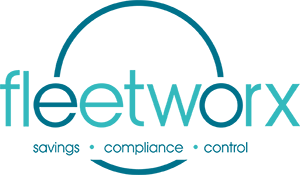22 Sep Are you getting the best possible value from your car fleet? (part 1) – 5 essential questions
Appointing an external fleet management company to oversee car fleet is becoming an increasingly common practice. As businesses look to reduce headcount and out-source non-core activity, removing the fleet department and handing responsibility to HR, Procurement and/or Finance is a very familiar picture across UK and pan-European companies. A 2014 industry report found this practice in 40% of their surveyed companies. It also showed that growth in fleet size increases the likelihood of outsourcing, with 62% of companies with over 2000 vehicles being managed externally.
There are 5 unintended consequences of losing the internal specialist and outsourcing a company car fleet, see this whitepaper to learn more: one of which is knowledge imbalance. Once the strategic specialism of car fleet management is lost to the business it creates a knowledge void. The internal teams that take on responsibility for fleet are typically generalists who may not have the benefit of previous experience in fleet. Subsequently they become reliant on the supply chain to provide insight and strategic direction. This power shift results in the supply chain knowing more than the business they supply, and the potential for them to feed only sanitised information back to the client. Not an ideal situation for creating a challenging supply environment.
We have created a mini-series of articles highlighting the questions to be asked of the supply chain in order to redress the knowledge imbalance.
This first article is looking at the area of transparency and cost control. The next article will look at policy and best practice/value and the third will cover management information.
So here we go. Remember these are questions that you have every right to ask your leasing company
- Where are the greatest levels of unplanned, in-life spend within our car fleet supply chain?
If it remains unchecked, in-life spend can drastically increase the overall cost of your company car program. A company car programme can expect to incur 5% of the annual driver cost in unplanned , in-life costs. Consequently a company running 1500 cars at an average driver cost of £9,000 pa can expect to be faced with an additional £675,000. Unplanned spend can come from accident costs, repair and maintenance costs and end-of-contract charges and can add significantly to the total cost of ownership. The supply chain should have systems to monitor these areas of spend and offer advice on how to reduce their impact. For example, experience shows that drivers who take the risk on damage liability show a reduction of low-speed impact incidents of up to 70%, subsequently reducing the amount of insurance and repair costs.
- Where are your areas of margin in the products you supply our business?
If you are employing an outsourced fleet provider you may be surprised to learn that about only 20% of their revenue is from the management fee they charge you. The rest consists of opaque margins and rebates. These revenues are broad and varied and consist of, among others, interest margin, contract adjustment margin, maintenance network rebates, repair network rebates. If your contract has been written with transparency in mind, these revenues will be visible and accountable. As the client you have every right to challenge and negotiate the value of these margins and decide who takes the benefit.
- What discounts are you getting from manufacturers and how are they built into our costs?
Suppliers who take a partnership approach to your relationship should be willing to share information about manufacturer discounts. Manufacturer discounts can be substantial and they should be made transparent to all stakeholders. Suppliers should be asked how the discounts are awarded and how they are distributed between themselves and their clients.
- How does our maintenance spend compare with the maintenance spend in the budgets?
This question is vital for setting and managing accurate budgets. Suppliers should have the ability to report on different spend categories, highlighting overspends and re-directing savings. Understanding the maintenance spend category helps advise on the strategic direction of maintenance contracts and supports effective decision-making.
- How much are we paying in end-of-contract charges?
End of contract charges is a spend category which will often go unobserved. Charges are frequently applied without being challenged and can lead to unplanned costs in tens of thousands of pounds. End-of-contract charges are made up of excess mileage claims, damage costs and late-hire charges. Close interrogation of all invoices related to these charges should be a standard and your supplier should have systems in place to deal with and report on these costs.
Dealing with the knowledge imbalance provides valuable intelligence that the maturing relationship with the supplier has gradually eroded. Recapturing some of that knowledge will help foster a challenging supply environment, drive efficiencies and avoid cost. Next time we will look at questions about policy and best practice; making sure the policies are working to the advantage of you and your drivers.
For an informal discussion about how you can get the best possible value from your car fleet drop us an email or give us a call.
Back to Blogs Back to Case Studies List

Sorry, the comment form is closed at this time.